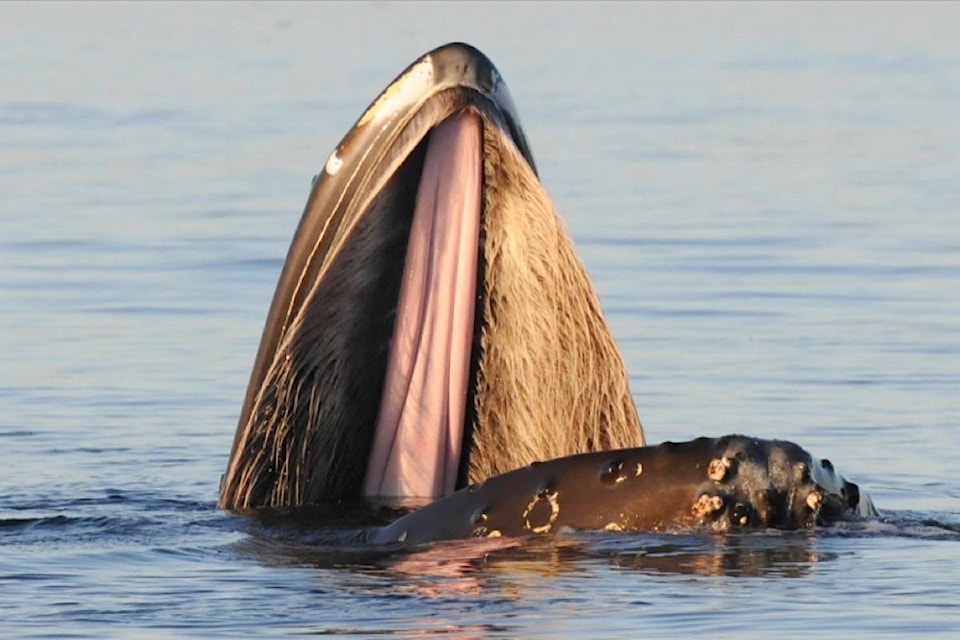Jackie Hildering is “The Marine Detective”, an award-winning marine biologist who recently co-published a research paper which studied local humpback whales.
Hildering, alongside Christie McMillan and Jared Towers, were able to determine feeding patterns of whale species inhabiting the Broughton Archipelago. The three researchers are part of a local research group, Marine Education and Research Society (MERS).
“Since 2011, humpback whales off northeastern Vancouver Island, British Columbia have been documented using a foraging innovation that we have called trap-feeding,” the research paper stated. “This feeding strategy differs from typical lunge-feeding in that it is initiated from a stationary or near stationary position, and characterized by whales holding their mouths open at or just below the surface for an extended period of time.”
Trap-feeding is a learned behaviour among humpbacks where the species sets a trap for juvenile herring, often gathered in small schools, stated the society. “The fish then accumulate in and around the mouth of the humpback to escape predation by diving birds.”
Trap-feeding uses less energy than lunge-feeding where the whales engulf a school of the fish (a “bait ball”) that has been concentrated by current and/or by the diving birds trying to feed on them.
Humpbacks are also well known for “bubble-net feeding”. With this strategy, teams work together to coral fish and this includes a member of the team blowing a net of bubbles to stop the fish from escaping.
Hildering explained that while humpbacks around BC’s central coast and further to the north will feed in bubble-net teams, this strategy is not used in high current areas like around northeastern Vancouver Island. The current would immediately dissipate the bubbles. Only occasionally will individual humpback whales use bubbles to coral fish (not teams) when there is no current i.e. on slack tide or in a back eddy.
“MERS’ research supports that the humpbacks of northeastern Vancouver Island are lunge-feeding specialists on juvenile herring, with some of the whales having learned to trap-feed when the fish are in smaller, less concentrated schools” she shared.
The North Island researchers found two humpback whales that trap-feed off Northeastern Vancouver Island back in 2011. Now, there are reportedly as many as 20 humpback whales confirmed to have used trap-feeding.
MERS stated that “this is the first published research on this novel feeding strategy, documented … around northeastern Vancouver Island.” The research reportedly spans over seven years, finally capped off with the marine biologists’ research published in Marine Mammal Science.
“I want to share what I learn so that it may lead to greater knowledge, appreciation, and positive action for the Ocean to which we are all connected and upon which our survival depends,” Hildering’s biography stated.
Hildering co-founded the Marine Education and Research Society, worked for Fisheries and Oceans Canada (DFO), ‘Namgis First Nation’s Kuterra company, and the SOS Marine Conservation Foundation. Towers researches transient and resident killer whales through DFO’s monitoring programs. McMillan also conducts research on killer whales, along with humpbacks and fin whales through DFO.
MERS is a registered charity organization that is dedicated to the conservation of marine ecosystems. According to BC Whales, “humpback whales were commercially hunted from the late 1800s to 1965. During this time period an estimated 28,000 humpback whales were caught in the North Pacific.”
- Clarifications were made on other feeding strategies.
